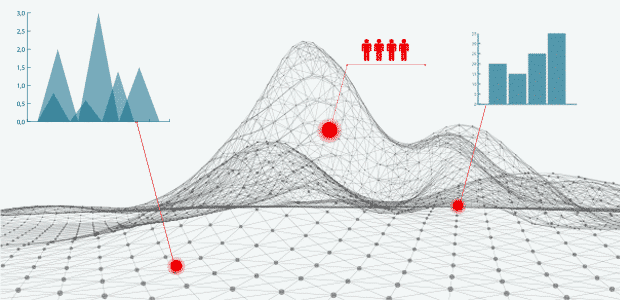 By Stephanie Kanowitz – Nov 01, 2017
By Stephanie Kanowitz – Nov 01, 2017
In this era of “do more with less,” the U.S. Postal Service’s Office of the Inspector General is relying heavily on data analytics to monitor performance of post offices’ mail and retail services.
“We have to take our agency, the place where it is now, and help guide it towards being the best possible OIG it can be,” said Kelly Tshibaka, chief data officer at USPS’ OIG, in a CXO Talk interview. By taking advantage of , “we know we’re going to be successful and helping our agents if we’re reducing the time it takes for them to make successful cases.”
And the plan has paid off. Using data analytics, the OIG was able to not just reduce the amount of time it takes to close a case — from 530 hours to 390 hours — but also to increase the return. “We used to have an ROI of $600,000 average in findings from audits and investigations. Now through the use of analytics we have an ROI of over $900,000 in findings from audits and investigations, Tshibaka said.
The office developed an audit model to examine contract fraud. It checks the pricing of the CEO’s role in relation to the contract and a number of different elements. With the model, auditors can “really quickly rack and stack the $13 billion in contracts the Postal Service has every year so they can identify which contractors or which contracts had the highest probability of fraud,” she said. “In one of those years, there was a $500 million return in our audit findings just from that one model.”
Besides using analytics for fraud detection, the OIG’s tools help auditors and investigators get to the root of a problem quickly and identify high-risk areas, according to a blog post from the agency. Four recent audits that looked at post office operations, such as retail transactions and local purchases and payments, illustrate how USPS uses these tools and the ROI it gets from them.
When a risk model showed that the Pottstown, Pa., Post Office had made about $38,000 in local purchases and payments using no-fee money orders in fiscal 2016, OIG decided to dig deeper. That’s because no-fee money orders — those under $1,000 — are the third option USPS prefers to pay for goods and services, after the electronic system or the SmartPay credit card. No-fee money orders are supposed to be used only once, and only in an emergency, the blog stated.
In January, OIG issued a report on its findings: “The retail associate responsible for making local payments stated she used cash and no-fee money orders to expedite payments to vendors based on instruction from a previous postmaster.”
Here’s a look at the other three audits:
- OIG’s Field Financial Risk Model identified the James A. Farley Station in New York City as having the highest variances in financial activities — such as differences between banking deposits and receipts, stock shipments not received by the unit and errors with transmitted sales and money order data — among USPS retail units in the New York District between April 1 and June 30, 2016, according to an announcement. OIG found that the person responsible had no working knowledge of the process for resolving the differences.
- The same model found that the Cardiss Collins Postal Store in Chicago had a similar problem. Here again, OIG found inadequate records of research and resolution.
- OIG use of tripwires and analytic tools that look at behaviors and patterns that indicate improper activity alerted officials to a problem at the Norman, Okla., Main Office, which had reported fewer stamp sales than other post offices in the country, according to a report. Retail associates must enter all stamp sales, returns and voids into the Retail Systems Software, and although OIG found no wrongdoing associated with the stamp sales, it found that the location had room for improvement in terms of transactions.
An OIG report scheduled for release in November will examine whether automation improves USPS’ ability to collect and manage checklist data.
Source: GCN
